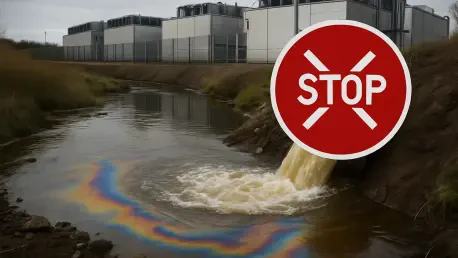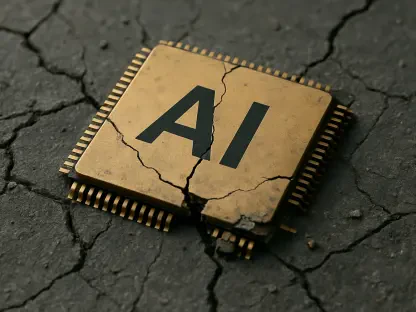Diving into the critical yet often overlooked issue of data center water pollution, I’m thrilled to sit down with Matilda Bailey, a networking specialist with a deep understanding of cutting-edge technologies and sustainability challenges in the data center industry. With her expertise in next-gen solutions, Matilda offers a unique perspective on how these facilities impact the environment beyond just energy and water consumption. In our conversation, we explore the intricate ways data centers interact with water systems, the pollutants they introduce, the scale of the environmental risks, and innovative strategies to mitigate these issues. We also touch on how water pollution fits into the broader landscape of data center sustainability.
How do data centers typically use water in their operations, and what makes it such a central part of their functionality?
Data centers rely heavily on water primarily for cooling purposes. As these facilities house thousands of servers generating immense heat, water is often used in evaporative cooling systems to dissipate that heat efficiently. In this process, warm air passes through a water-soaked membrane, and as the water evaporates, it carries the heat away. This method is popular because it’s cost-effective and energy-efficient compared to other cooling technologies. Without water, maintaining optimal temperatures in data centers would be far more challenging and expensive, potentially risking equipment failure.
What happens during the evaporative cooling process that allows pollutants to mix with the water?
During evaporative cooling, water comes into contact with various chemicals and materials within the system. While the process itself seems clean—producing mostly water vapor—there’s often excess liquid that gets drained out after evaporation. This runoff can pick up chemicals like biocides or corrosion inhibitors that are used to maintain the system. Even though it’s not intentional, these substances can leach into the water as it cycles through, creating a potential pollution source when that water is discharged into the environment.
Can you describe the main types of pollutants found in data center water systems and why they’re used?
There are three primary categories of pollutants we see. First, biocides like chlorine dioxide or bromine are added to prevent bacteria, mold, and algae growth in the warm, damp environment of cooling systems. Then there are corrosion inhibitors, often phosphates, which protect the metal components of the system from degrading over time. Lastly, heavy metals such as copper or zinc can enter the water, not as additives, but from the wear and tear of the system’s materials. While each serves a purpose or is an unavoidable byproduct, they can become problematic when released into natural water sources.
How significant is the issue of water pollution from data centers when we look at the scale of their water usage?
The scale really amplifies the problem. A single data center can use up to 5 million gallons of water daily, which is staggering—equivalent to the usage of over 15,000 households. At that volume, even tiny amounts of pollutants in the wastewater can add up over time, creating a substantial environmental impact. It’s not just about the quantity of water but also where it goes. If this wastewater isn’t routed to treatment facilities and instead flows directly into lakes or streams, those pollutants can harm local ecosystems, affecting aquatic life and even drinking water sources.
What are some practical steps data center operators can take to minimize water pollution risks?
There are several effective strategies. One is adopting water-free or low-water cooling systems, like direct-to-chip or closed-loop cooling, which drastically cut down on water usage and thus pollution risks. Another is using safer chemical treatments—opting for less harmful biocides like chlorine dioxide over more toxic options. Operators can also distribute water discharge across multiple locations to avoid concentrating pollutants in one area. Finally, treating wastewater before release, either onsite or through municipal systems, is critical to filter out contaminants and protect the environment.
When you compare water pollution to other sustainability challenges data centers face, like energy or water consumption, where does it stand in terms of priority?
While water pollution is a serious concern, it’s often overshadowed by the sheer volume of water and energy data centers consume. Energy usage, for instance, tends to get more attention because of its direct link to carbon emissions. However, water pollution is still a vital piece of the sustainability puzzle. If left unaddressed, it can cause long-term harm to local communities and ecosystems. Tackling it alongside water and energy efficiency creates a more holistic approach to making data centers environmentally friendly.
What obstacles might data center operators encounter when trying to implement these pollution-reducing strategies?
There are a few hurdles. First, switching to water-free cooling systems can involve significant upfront costs and infrastructure overhauls, which not all operators can afford right away. Then, finding and adopting safer chemical treatments requires testing and sometimes regulatory approval, which can slow things down. Distributing discharge or treating wastewater also means navigating local regulations and potentially investing in new equipment or partnerships with treatment facilities. It’s a complex balance of cost, technology, and compliance that can make implementation challenging.
Looking ahead, what is your forecast for the future of water pollution management in data centers?
I’m cautiously optimistic. As sustainability becomes a bigger priority across industries, I expect we’ll see more innovation in cooling technologies that minimize or eliminate water use altogether. There’s also growing pressure from regulators and communities for data centers to adopt stricter environmental standards, which will likely push operators to invest in better wastewater treatment and pollution controls. Over the next decade, I think we’ll see a shift toward more integrated sustainability practices, where water pollution is addressed as part of a broader commitment to reducing environmental impact. Collaboration between tech companies, policymakers, and environmental experts will be key to making that happen.









